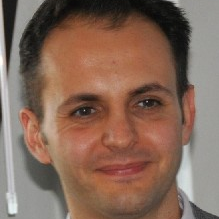Preprint
Article
Overview of Modelling and Control Strategies for Wind Turbines and Hydroelectric Systems: Comparisons and Contrasts
Altmetrics
Downloads
957
Views
581
Comments
0
This version is not peer-reviewed
Submitted:
08 August 2017
Posted:
09 August 2017
You are already at the latest version
Alerts
Abstract
Increasingly, there is a focus on utilising renewable energy resources in a bid to fulfil increasing energy requirements and mitigate the climate change impacts of fossil fuels. While most renewable resources are free, the technology used to usefully convert such resources is not and there is an increasing focus on improving the conversion economy and efficiency. To this end, advanced control technologies can have a significant impact and is already a relatively mature technology for wind turbines. Though hydroelectric plants can use simple regulation systems, significant benefits have been shown to accrue from the appropriate use of the same control methods designed for wind turbine plants. This represents the key point of the paper. In fact, to date, the application communities connected with wind and hydraulic energies have had little communication, resulting in little cross fertilisation of control ideas and experience, particularly from the more mature wind area to hydrodynamic systems. Therefore, this paper examines the models and the application of control technology across both domains, both from a comparative and contrasting point of view, with the aim of identifying commonalities in models and control objectives, as well as potential solutions. Key comparative reference points include the articulation of the exployed models, specification of control objectives, development of high--fidelity simulators, and development of solution concepts. Not least, in terms of realistic system requirements are the set of physical and constraints under which such renewable energy systems must operate, and the need to provide reliable and robust control solutions, which respect the often remote and relatively inaccessible location of many onshore and offshore deployments.
Keywords:
Subject: Engineering - Control and Systems Engineering
Copyright: This open access article is published under a Creative Commons CC BY 4.0 license, which permit the free download, distribution, and reuse, provided that the author and preprint are cited in any reuse.
MDPI Initiatives
Important Links
© 2024 MDPI (Basel, Switzerland) unless otherwise stated





